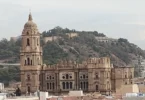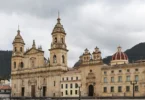
Introduction
Graz Cathedral (German: Grazer Dom), also called St. Giles’ Cathedral (German: Dom St. Ägidius), is the cathedral church in the Austrian city of Graz, dedicated to Saint Giles. It is the seat of the bishop of the Steiermark diocese from 1786, called the Diocese of Graz-Seckau.
The church was built as church of the Court (hofkirche) in 1438-62 by Friederick III in the Gothic architecture and later (1577-1773) officiated by the Jesuits that made some alterations in Baroque style. Nearby is Mausoleum of Emperor Ferdinand II.
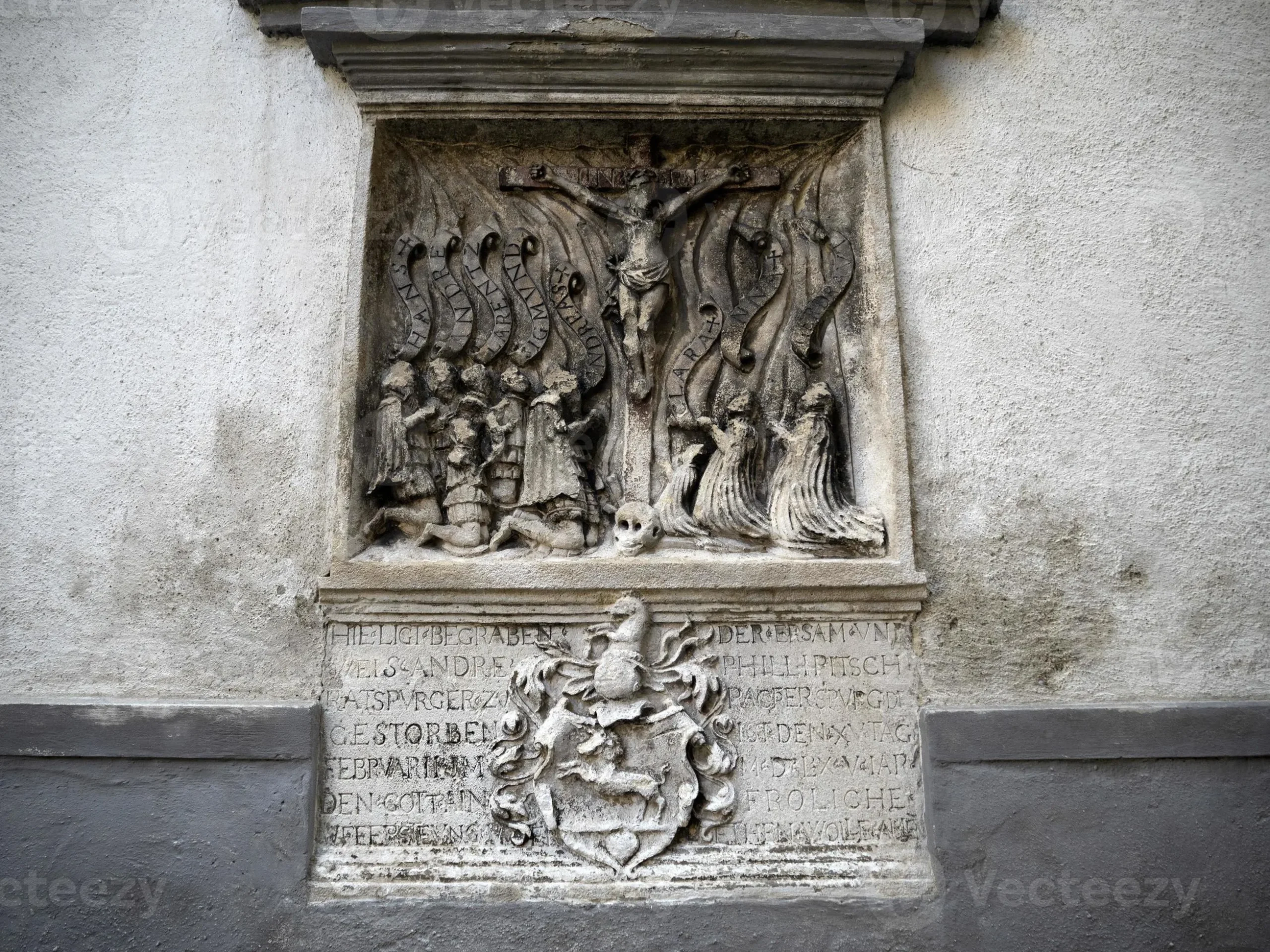
Graz Cathedral (also known as St. Giles Cathedral) is a beautiful Gothic-style church and a famous place of worship. The cathedral dates back to the 15th century and came into existence when Emperor Frederick III ruled the city of Graz. Later in early 17th and 18th century, the church was redesigned in Baroque style. Dedicated to St. Giles, the Graz Cathedral is the seat of the bishop of the Steiermark diocese.
Graz Cathedral is dedicated to Saint Giles, aka Saint Aegydius. The first church of Saint Giles had occupied the site since 1174. The Cathedral was designed in a late Gothic style and built in the 15th century under the auspices of Friedrich III. It was built outside the city walls as a fortified church.
Construction of the Cathedral probably began in 1438. In the sacristy and the choir are dated plaques with the Latin letters AEIOU, there are various interpretations. Some say it means “Austria is destined to rule the world” (Austriae est imperare orbi universo). Friedrich really liked this one. It can be found everywhere.
The Cathedral became important during the residence of Archduke Charles II in Graz, who also called in the Jesuits to balance the expansion of Protestantism. In the two hundred years since then, the emperor of the cathedral has been controlled by the Jesuits, and most of the important interior decorations were completed during this period. In the early 18th century, the interior of the cathedral was almost completely renovated into Baroque style, except for its own architectural structure. After Pope Clement XIV disbanded the Jesuit Society in 1773, the original parish church and the Jesuit church in the cathedral finally evolved into the cathedral today.
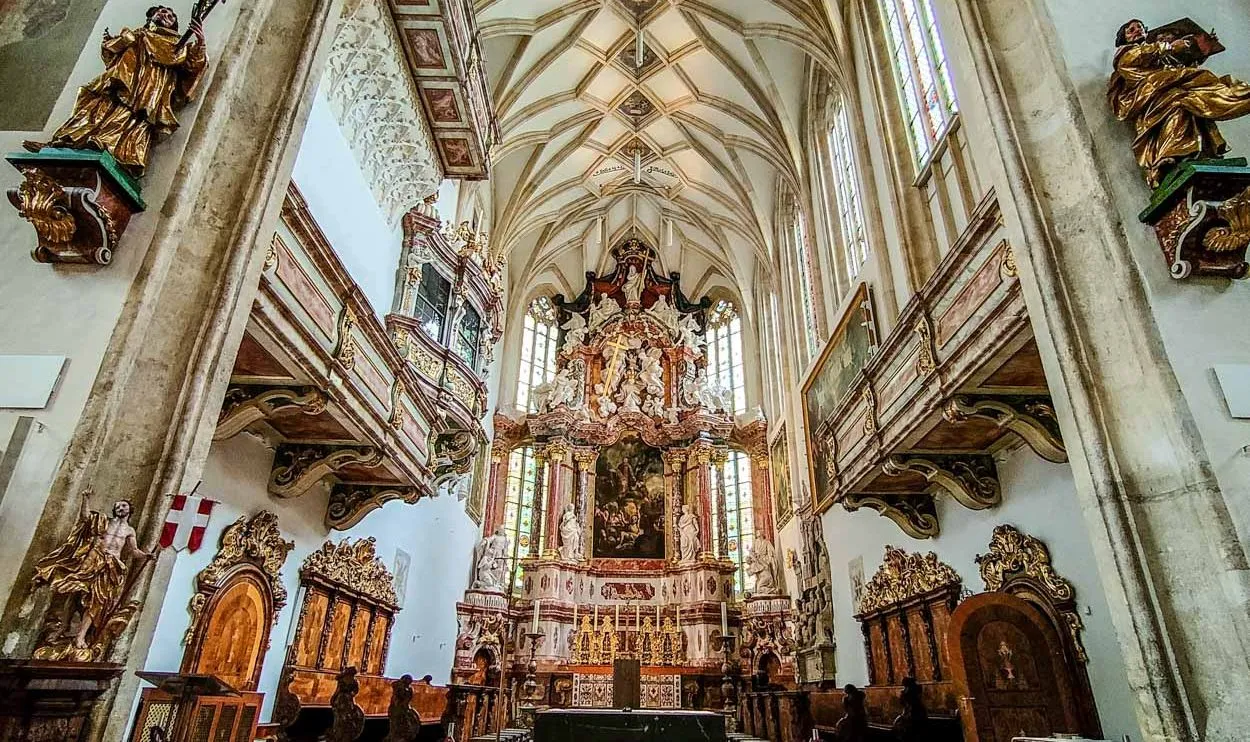
A true jewel in the city, this popular religious site features several rare attractions such as the ornate high altar, organ, pulpit, choir stalls and a 15th-century medieval fresco. Among the other main highlights of Graz Cathedral include its impressive Gothic-style architecture and a beautiful ornate tower with a golden spire. Some of the most precious & attractive objects of the cathedral include the two reliquaries on both sides of the chancel entrance. Another attraction is the reliquary shrines that contain the famous remains of saints. Depicting the St. Giles miracles, the choir dominated by the high altar is also worthy of mention. The cathedral of the present times boasts of magnificent Baroque style interiors with its narrow triumphal arch covered from both sides by two fine reliquaries. You can also visit the mausoleum located adjacent to Graz Cathedral when you are here. Renowned for its stunning artworks, tomb chapel, and beautiful sculptures, it was built for Emperor Ferdinand II in the early 16th century.
South of the Graz Burg stands the Late Gothic Cathedral, on the place of a former church devoted to St Giles, which is first referred to in 1174. In 1564 it became the court church, and in 1786 the seat of the Bishops of Seckau. Chiefly fine is the main entryway, bedecked with the coat of arms of its builder, Emperor Frederick III. On the south outside wall, facing on to a small square, are the relics of a Late Gothic fresco, the “Landplagenbild”, depicting Graz in jeopardy by pestilence, the Turks and a plague of locusts. The interior of this church, chiefly Baroque, is extraordinary.
Exterior of the Church

The exterior of the cathedral looks very sober today. In the Gothic period, however, the façades were covered with paintings. One fresco has been preserved – the so-called Gottesplagenbild (‘God’s Plagues’). It refers to a year of horrors Graz suffered in 1480.
The exterior has a walled choir with buttresses. The frescoes on the facades have been whitewashed, except for the plagues of God, by Thomas von Villach. Chapels on the outer walls, two ridge turrets, one large roof turret, sheet metal doors, walled-up tombstones and a sculpture of Saint Aegydius complete the picture
Interior of the Church
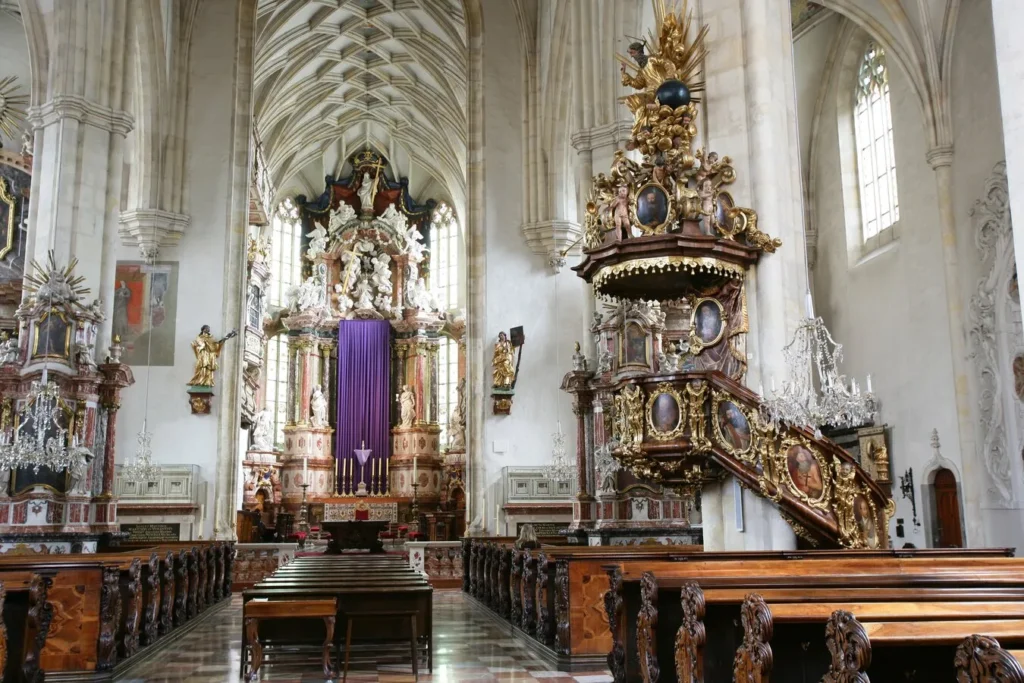
The interior of the cathedral hormoniously combines Gothic architecture with Baroque furnishing. The frescos in the church date from the times of Emperor Frederick III. Among them: a fragment showing St. Christopher, clearly recognizable as Frederick wearing the Styrian ducal crown.
The Graz Cathedral is a “hall church” inside, with added side chapels and a baroque organ gallery. The nave is really three naves separated by formidable-looking pillars. The baroque high altar replaced the Renaissance high altar in 1733. The longish choir is behind a tall triumphal arch. Two reliquaries on marble plinths flank the triumphal arch.
Among the most precious objects in the cathedral are the two reliquaries to the left and the right of the chancel entrance. Originally the chests belonged to Paola Gonzaga. In 1477 she married Leonhard of Gorizia and brought along her bridal chests from her native Mantua to Leonhard’s castle Bruck near Lienz in East Tyrol.
Mausoleum Graz
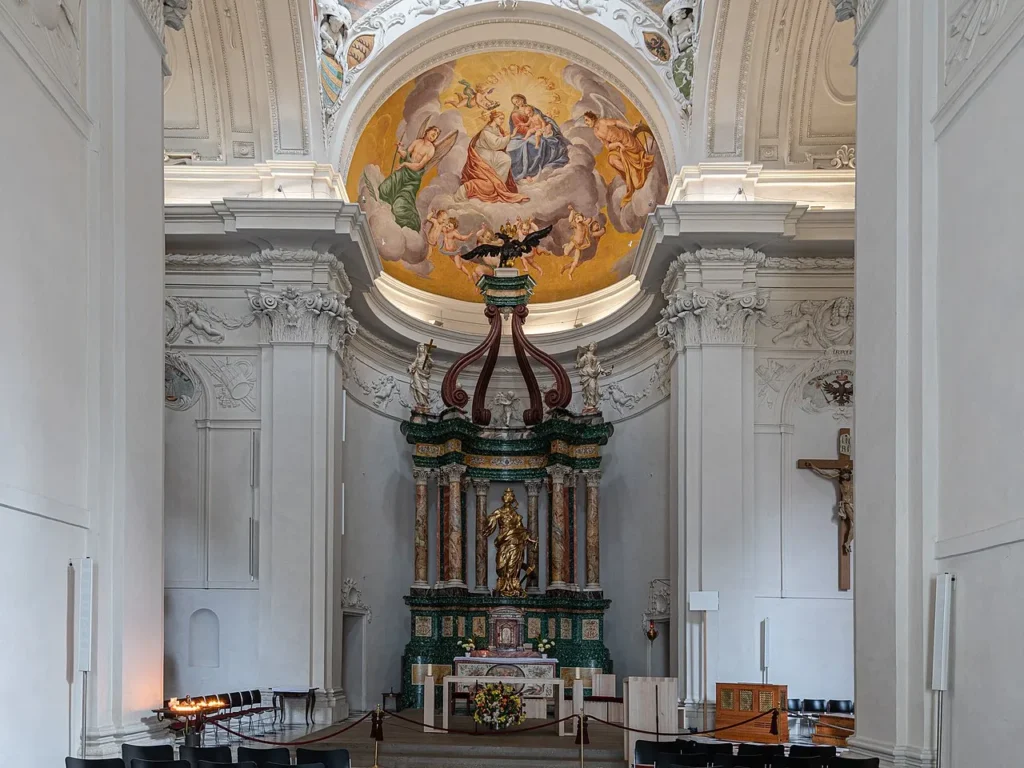
The Cathedral near the mausoleum of Ferdinand II, built between 1438 and 1464 by order of Frederick III, is one of the finer buildings in Graz. The cathedral is a typical Gothic building. The precious cultural relics in the church are the reliquary boxes placed on both sides of the altar. The outside of the box is inlaid with verses carved with ivory. This box originally belonged to Princess Paul Gonzalo, who married the Leohard family in Brook Castle (near Linz) in eastern Tyrol, Austria in 1477. of the Catholic Church, and later this box was used to preserve the ashes and holy bones of believers who devoted themselves to the doctrine.
Feast Day
Feast day : September 1st
Church Opening Time:
Monday 7 am–7:45 pm
Tuesday 11 am–7:45 pm
Wednesday 7 am–7:45 pm
Thursday 7 am–7:45 pm
Friday 7 am–7:45 pm
Saturday 6:15 am–7 pm
Sunday 7 am–6 pm
Opening Hours of the parish office :
Monday, Tuesday and Thursday : 09:00 – 11:00
Mass Timing
Monday to Friday : 07:00 PM
Saturday : 06:30 AM, 06:15 PM
Sunday and Public holiday : 08:30 AM, 10:00 AM, 5:00 PM
Contact Info
Address:
Roman Catholic Parish Graz-Dom,
Bürgergasse 1, 8010 Graz, Austria
Tel : +43 316 / 82 16 83
Accommodations
Connectivities
Airway
Graz (GRZ) Airport to Graz Cathedral in Austria distance is 19 min (12.3 km) via S Autobahn/E59/E66.
Railway
Graz Main Station to Graz Cathedral distance is 13 min (3.8 km) via Keplerstraße


